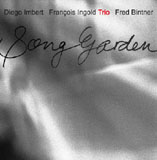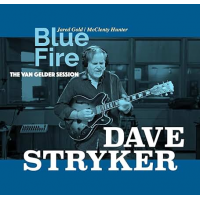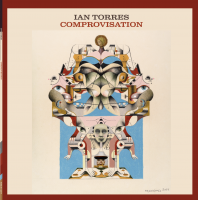Home » Jazz Articles » Album Review » Harris Eisenstadt: The All Seeing Eye + Octets
Harris Eisenstadt: The All Seeing Eye + Octets
A brazen re-interpretation of Wayne Shorter's brooding masterpiece, The All Seeing Eye (Blue Note, 1965), Eisenstadt re-imagines the album's simmering drama as a roiling chamber music recital. Ambitious in scope, Eisenstadt bolsters the classic album with two long-form original suites that blend neo-classical intricacy with the emotional immediacy of free jazz and folk forms.
Altering the timbre and tone of the original 1965 session by re-organizing the instrumental palette, Eisenstadt employs a richly hued woodwind trio in lieu of Shorter's low brass and saxophones. The plangent bassoon of Sara Schoenbeck mingles with the caterwauling clarinets of Andrew Plask and Brian Walsh as they soar where the original line-up churned, blending fervent expressionism with lyrical precision.
Eisenstadt adds lift to the ensemble by replacing the traditional chordal safety net of the piano with the spare airiness of Chris Dingman's kaleidoscopic vibraphone. Interwoven with the lyrical refrains of Daniel Rosenbloom's trumpet, they cast a brilliant metallic sheen over to the octet's resonant, woody timbre. Driving the group with graceful fluidity, bassist Scott Walton and the leader maintain the pacing of the original album, driving the octet through brisk tempos and dreamy ballads.
Shorter's ominous harmonies and driving rhythms provide poignant contrast to Eisenstadt's long-form suites. Occupying the fertile middle ground between the accessible and the adventurous; Eisenstadt's writing blends lyricism with sophistication in a satisfyingly organic way.
Originally conceived for an ensemble at least twice the size, "What We Were Told" and "Without Roots" are given animated performances by the stripped down octet. Occupying the second half of the record, these long-form compositions integrate Western Classicism with shades of Copeland, Ives and Ligeti punctuated by knotty interjections of blistering free-bop and lilting African folk melodies.
Avoiding typical Third Stream pitfalls, the octet eschews the studiously cerebral for the lyrically direct. Blending melodic kernels of euphonious depth with intricate counterpoint and dense harmonic voicings, Eisenstadt's writing resonates with singular clarity. The All Seeing Eye + Octets presents a vision of the future cast through the lens of the past.
Track Listing
The All-Seeing Eye; Genesis; Chaos; Face of the Deep; Mephistopheles; Without Roots I; Without Roots II; Without Roots III; What We Were Told I; What We Were Told II; What We Were Told III.
Personnel
Harris Eisenstadt
drumsHarris Eisenstadt: drums; Daniel Rosenboom: trumpet; Sara Schoenbeck: bassoon; Brian Walsh: clarinet (1, 3), bass clarinet (2, 4-11); Andrew Plask: clarinet (2, 4-11), bass clarinet (1, 3); Chris Dingman: vibraphone; Scott Walton: acoustic bass; Aaron Smith: trumpet (6-11); Marc Lowenstein: conductor (6-11).
Album information
Title: The All Seeing Eye + Octets | Year Released: 2007 | Record Label: Poo-Bah Records
Tags
PREVIOUS / NEXT
Support All About Jazz
 All About Jazz has been a pillar of jazz since 1995, championing it as an art form and, more importantly, supporting the musicians who make it. Our enduring commitment has made "AAJ" one of the most culturally important websites of its kind, read by hundreds of thousands of fans, musicians and industry figures every month.
All About Jazz has been a pillar of jazz since 1995, championing it as an art form and, more importantly, supporting the musicians who make it. Our enduring commitment has made "AAJ" one of the most culturally important websites of its kind, read by hundreds of thousands of fans, musicians and industry figures every month.



















